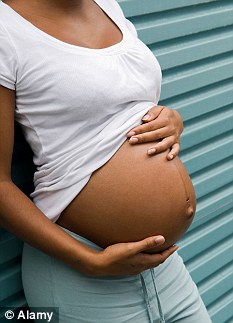According to a demographic health survey, 2013, Nigeria accounts for 13% of the global maternal death rates with an estimated 36,000 women dying in pregnancy or at child birth each year. At least 5,500 of these deaths occur among teenage mothers. 20% of child deaths in sub-Saharan Africa occur in Nigeria. About half of the world’s under-five deaths occur in five countries-Congo, Pakistan, China, Nigeria and India.
By Charles Iyare
Childbirth is not a good experience for many women in Sub Sahara Africa. Many of them die at child birth.
The state of maternal, newborn and child health is an important indicator of a nation’s health care delivery system and the level of the society’s development.
These deaths are needless and worrisome because the pace of development of the sector still remains very slow in Nigeria’s quest to achieve the Millennium Development Goals (MDG (4 and 5) targets of reducing infant mortality by 2/3 and maternal mortality ratio by 3/4 in 2015.
Over the years there has been poor management of our health care system. This has been the greatest challenge confronting our rural communities.

Pregnant women who need medical attention sometimes face the challenges of poor, non accessible, distant roads leading to where clinics are located.
A lot of these hospitals lack basic health infrastructure. Doctors and birth assistants are few and far between and some of the health personnel seldom show up to cater to the sick people.
Research has it that Post Partum Haemorrhage (PPH) is one of the major problems leading to IMMR and was rated between 23% and 44% of the total maternal deaths especially in the Northern States.
The ratio of women dying from PPH is 1 in 6 in the North East and North West as against 1 in 18 between South West and South East geopolitical zones.
There is a huge gap comparing Northern and Southern parts of Nigeria in terms of under 5 child deaths.
The reality about these figures is the pain of human misfortune, for thousands of families who have lost children, mothers and wives to a ravaging health care challenge in which a sustainable intervention for women and babies would have prevented most of these deaths.
Antenatal and postnatal health system (mostly in rural areas) is characterized by lack of man-power, shortage of medical equipment, drugs, and poor sensitization of rural community members who ought to be beneficiaries of health facilities.
By 2014, Infant Mortality Rate dropped to 74.09 deaths per 1,000 live births, recording a high level improvement from the past five years.
The millennium development goal towards 2015 is aimed at reducing infant /maternal mortality Rate and this has spurred the government to record some significant success in the reduction of IMMR.
It has done so by siting some health centres in communities. However, government has reneged on much of its responsibility to provide medical aid, accessible roads to health centres, and ensure that they are sited in not too distant outposts from residence within the local communities.
This has resulted in the death of pregnant women on their way to clinics that are kilometres away from their home.
The absence of electricity during delivery leaves health attendants with no option than resort to the use of lanterns as a back-up for electricity.
Insufficient drugs and inability of patients to afford medical bills increase the rate of people resorting to affordable traditional system of delivery during child bearing and antenatal treatment.
According to a demographic health survey, 2013, Nigeria accounts for 13% of the global maternal death rates with an estimated 36,000 women dying in pregnancy or at child birth each year. At least 5,500 of these deaths occur among teenage mothers.
20% of child deaths in sub-Saharan Africa occur in Nigeria. About half of the world’s under-five deaths occur in five countries-Congo, Pakistan, China, Nigeria and India.
According to the United Nations Population Fund (UNFPA) reporter, over the last 20 years, even though Nigeria made significant progress in reducing maternal mortality ratio, it however has to make resolute efforts to reach the Millennium Development Goals of 300 per 100,000 (or under 20,000 annual deaths) by 2015.
Many developing countries in Africa are yet to meet the MDGs and improve maternal health, reduce Maternal Mortality Ratios (MMR) to a significant level, and have wide spread access to reproductive health by 2015.
There is the need to increase the awareness of the effect of poor hygienic conditions, improved living condition of pregnant women, the non- compliance to prenatal care, and advocate increased access to antenatal treatment and facilities that will help mitigate the causes of high mortality rates.
Infrastructure deficiency in the primary health care system should be given urgent attention. Government should be encouraged to restructure a sustainable health policy that will adequately address the shortcomings and effects of child and maternal mortality.
We recommend that stake holders should ensure that there are professional care givers in the health sector for pregnant mothers and children, increase in awareness of the causes of maternal deaths, provision of drugs as life saving intervention, and the promotion of a healthy lifestyle that benefit both mother and child.
Government should organize workshops as part of its responsibility to enlighten communities on the dangers of Female Genital Mutilation (FGM).
It should sensitize the people on the consequences of early marriage and the tradition of home birth and carry out a campaign to identify the consequences of maternal and infant mortality.
There is need to implement a blue print that can reduce the dangers that women are exposed to before, during and after labour.
Finally, research institutions should be strengthened to enable them carry out an in-depth study of the possible ways to implement strategic policies that will help ameliorate the plight of rural communities and bring about quality health care system.
People living in rural communities mostly from high maternal mortality rate (MMR) should be targeted for health care transformation and in the area of safe delivery and proper health care system.
Charles Iyare is Monitoring and Evaluation (M&E) Officer of Africa Network for Environment and Economic Justice (ANEEJ), Benin City.







Good research, I like the easy flow of the idea here but something must be done to stem this tide. As women and our mothers give life, they must not die doing so.